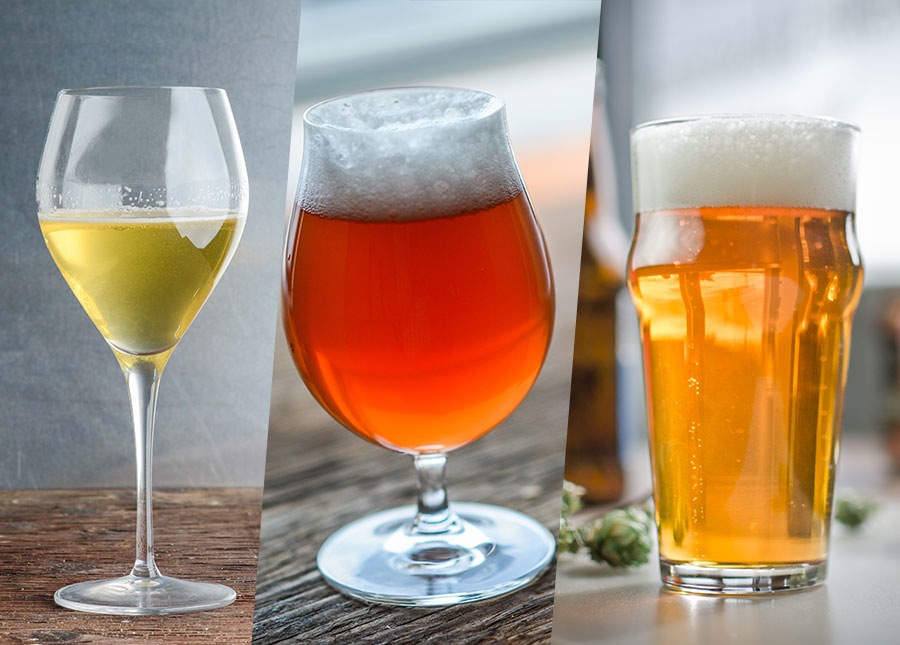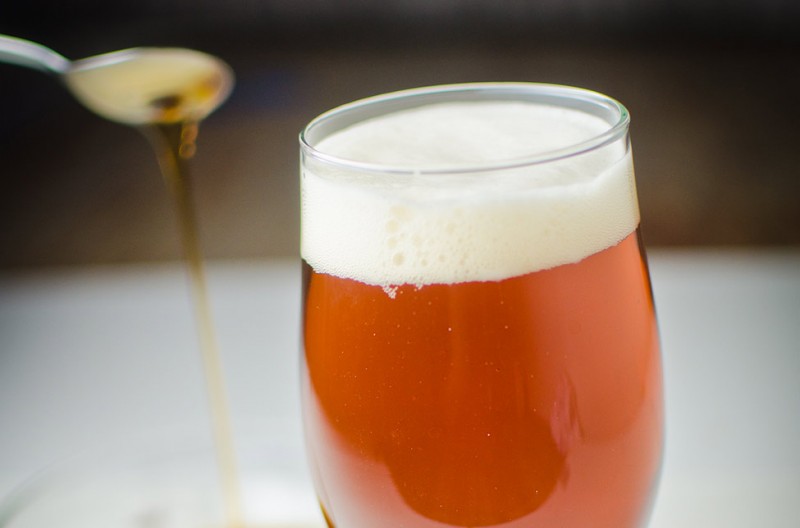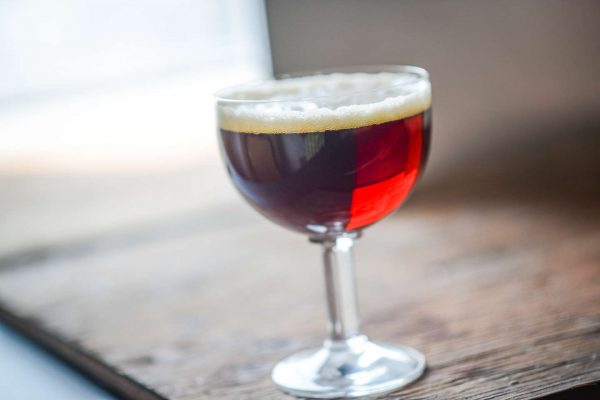
Beer, mead, and wine have long been intertwined throughout history and involved in one of the most tumultuous but delicious love triangles on the fermentation scene.
Today, their legacy includes three love children, each a delicious hybrid beverage that combines the best of beer, mead, and wine.
Pyment (Wine + Mead)

The first mentions of wine and mead’s love affair are said to be referenced in some of the earliest records of Rome, Greece, and Egypt. The vinous and acidic quality of grapes paired with the fragrance and sweetness of honey is the hallmark of pyment, a combination of mead and wine.
With more than 300 honey and 10,000 wine grape varieties, the options for flavor combinations are incredible. Combine that with a range of strengths (3.5–14% ABV or more) and sweetnesses (dry to sweet), and you’ve got yourself one diverse mead-wine hybrid.
Homebrew Recipe: Pyment with Muscat Grape Juice and Sage Blossom Honey
Braggot (Beer + Mead)

The legend of beer and mead’s escapades was a topic of the famous Hymn to Ninkasi, an ode to the Sumerian goddess of beer that highlights an ancient beer recipe. Some have translated the 3,000+ year old sing-along recipe to include an addition of honey, creating a hybrid beer-mead style known as braggot today.
Braggot is typically brewed as a beer, with honey added during the boil, during fermentation, or after fermentation. To maximize the amount of honey character in the braggot, it is recommended to add the honey after fermentation since the heat of the boil and the vigor of fermentation can drive off precious honey flavor and aromas.
Homebrew Recipe: An English Braggot
Beer/Wine Hybrid (Beer + Wine)

Beer and wine have been through a lot together, from (supposedly) gracing the cup of King Midas to surviving the dry spell of Prohibtion in the USA. Today, it’s not unusual to see beers aged in wine barrels, but there are also beer-wine hybrids that bring grapes and grain together in one fermenter.
These beer-wine hybrids typically utilize beer as the base and grapes as an additional source of fermentable sugar and flavor complexity. The key is to select a beer style and grape variety that will work in harmony to showcase the best of what malt, hops, grapes, and yeast have to offer.



Share Post